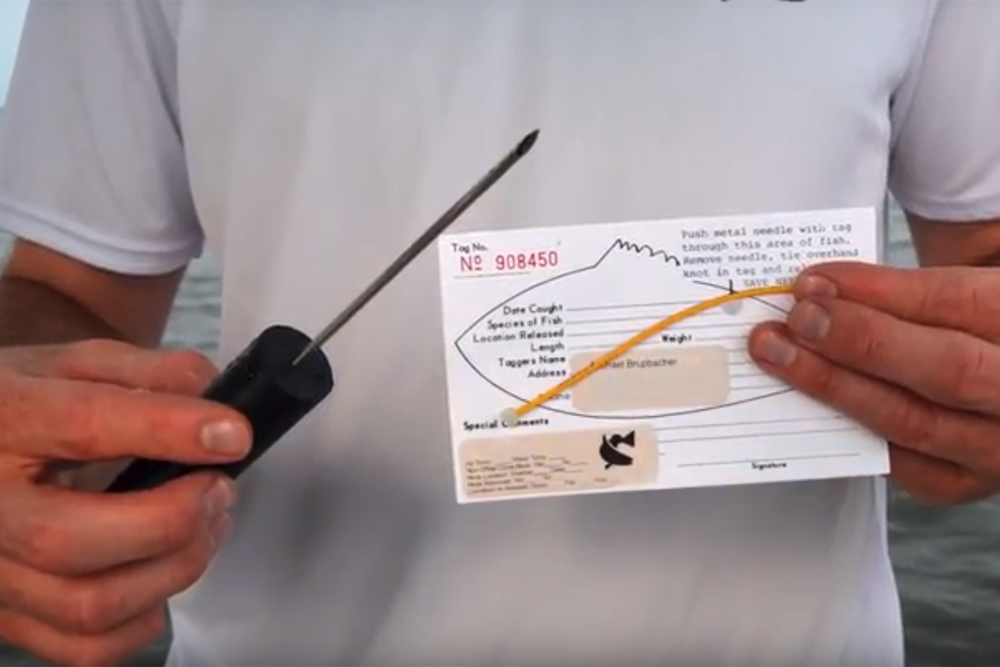It’s important for participants in the CCA Maryland tagging program to understand how to tag striped bass, so FishTalk angler in chief Lenny Rudow brought aboard Mike Brupbacher, CCA Maryland’s volunteer tagging coordinator, to demonstrate the proper method on how to quickly and effectively tag and release stripers. We’ll go through the details in a moment, but first, check out this short video we shot on how to tag striped bass.
Now, let’s look at how you can become a citizen scientist and help both anglers and managers learn more about stripers. Don’t worry, it’s a simple process:
- If you’re not a CCA member already, join up.
- Attend a tagging seminar. These are held at many regular CCA meetings, and are listed on the CCA web site.
- Order your supplies. You can get your tagging needle and tags at the seminars, or online on the Fish Tagging web page.
- Refresh your memory on how to best handle and safely release the fish. There’s info on the CCA web site at the bottom of the Fish Tagging page (the link above), and you should be sure to check out Dos and Don’ts of Catch and Release Fishing.
- Catch some rockfish, and tag ‘em!
- Fill in the data on the tagging card(s), and mail them in to the American Littoral Society.
Tagging striped bass will help scientists and regulators gain a better understanding of migratory patterns, growth rate, and mortality issues – yes, including those related to circle hooks – and all of the tagging data gathered through this program will be transferred to the National Marine Fisheries Service database at the Woods Hole lab. Meanwhile, a lack of data is often the worst enemy of sensible fisheries regulation. In other words, this project matters. You can personally help generate the data that could have a lasting impact on the striped bass populations in the Chesapeake Bay, and up and down the coast.

Wait a sec – won’t skewering all those stripers through the back harm them? The fact of the matter is that as long as you treat the fish right and get them back into the water quickly, tagged fish should do just fine. Since the American Littoral Society began tagging in 1965, volunteers have tagged over 640,000 fish. And tagging in general is considered one of the best ways to generate reliable data for fisheries management. It’s not just stripers, either. Although rockfish are certainly the focus of this program, tagging other species ranging from red drum to black sea bass will also be helpful to managers in the long run.
Wait just another sec – what about Virginia anglers who also ply the Chesapeake, and want to play a role? CCA Virginia members may also participate. Stand by for more information on a tagging seminar near you or let CCA know if you like to host one in your area in the near future.